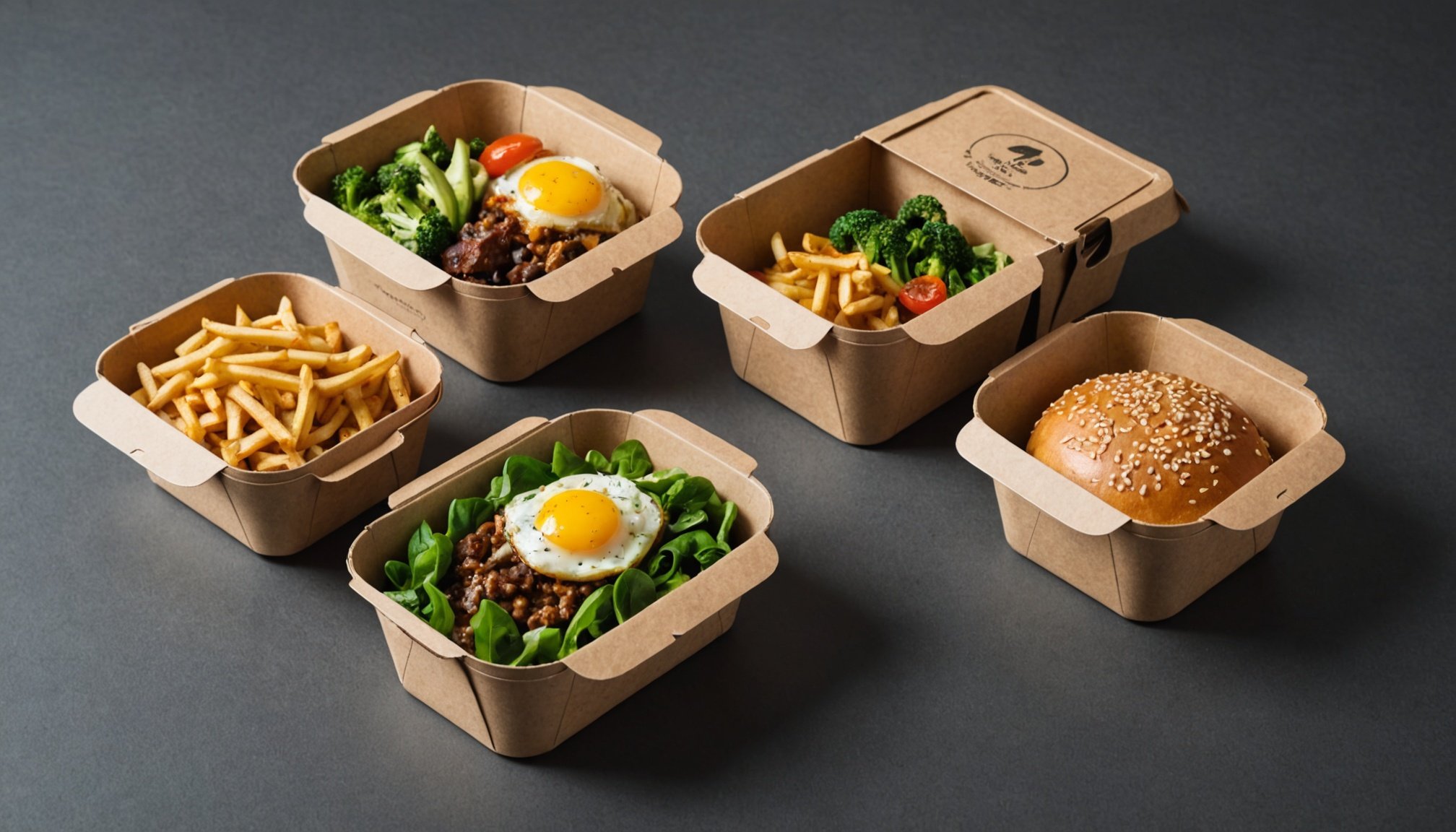Overview of Eco-Friendly Biodegradable Packaging
Eco-friendly biodegradable packaging has emerged as a sustainable solution that minimizes waste and environmental harm. This type of packaging is crafted from biodegradable materials, which naturally decompose, reducing their long-term impact on ecosystems. These materials are essential in packaging because they lessen the dependency on plastic, which notoriously pollutes land and waterways.
The importance of such packaging cannot be overstated. Current packaging methods contribute significantly to environmental degradation, with plastic waste filling landfills and ending up in oceans. In contrast, biodegradable packaging offers a pathway to mitigate these undesirable effects due to its ability to break down organically. This aligns well with the growing consumer demand for sustainable practices, especially within the food industry, where packaging is used extensively.
Topic to read : 5 Major Advantages of Buying Craft Alcohol Made in America
As consumers increasingly prioritize sustainability, their purchasing decisions can promote eco-friendly innovations. Businesses, especially those in the food sector, are responding by adopting biodegradable packaging, showcasing their commitment to environmental health. This shift not only caters to consumer preferences but also sets a precedent for responsible ecological stewardship, encouraging a shift toward more sustainable solutions industry-wide.
Innovative Packaging Ideas for Trendy Take-Out Cafes
Embracing innovative packaging ideas is becoming essential for trendy take-out cafes aiming for sustainability. These cafes are exploring green packaging solutions to appeal to an eco-conscious clientele while reducing their environmental footprint.
Also read : Elevate your small pub kitchen: innovative strategies for optimizing vertical space
Plant-Based Containers
Plant-based materials like cornstarch and sugarcane are gaining popularity as eco-friendly alternatives to traditional plastic containers. These materials decompose naturally, thus aligning with green packaging solutions. The aesthetic appeal of these containers, often showcasing a natural look, enhances the overall dining experience. Functionally, they are sturdy and suitable for a variety of food types, making them an ideal choice for cafes striving for sustainability.
Edible Packaging
Edible packaging offers a quirky and sustainable option that not only reduces waste but also adds a unique selling point. Options like rice paper wraps or thin biscuit containers can be consumed along with the food, thus eliminating waste altogether. By adopting edible packaging, cafes can create engaging promotional campaigns, tapping into consumer interest in novel, eco-friendly solutions.
Recyclable and Compostable Bags
Utilizing recycled or compostable bags as takeaway options can significantly enhance branding efforts while adhering to sustainable practices. Materials like recycled paper or biodegradable polymers are often used. These bags not only meet green packaging solutions but also resonate with consumers’ environmental values, fostering brand loyalty.
Case Studies of Successful Implementations
Exploring success stories helps illustrate the tangible benefits of biodegradable packaging. These case studies showcase cafes that have effectively implemented sustainable practices through innovative packaging solutions.
One notable example can be seen in a London-based cafe that transitioned to biodegradable materials such as plant-based containers and compostable bags. This switch not only reduced their environmental footprint but also aligned with their brand ethos of sustainability. They reported a 25% increase in sales, attributed to attracting eco-conscious customers who value green packaging choices.
Comparing the costs and benefits, these cafes found that while initial investments in biodegradable packaging were higher than traditional materials, the long-term savings and improved brand loyalty compensated for the upfront costs. Consumers expressed positive feedback, demonstrating heightened engagement and appreciation for the eco-friendly initiatives, further boosting the cafes’ reputations.
Additionally, consumer feedback has highlighted the importance of transparency, with patrons appreciative of cafes that openly discuss the impact and origins of their sustainable solutions. These case studies affirm the positive correlation between adopting biodegradable packaging and strengthening customer relationships, ultimately proving that eco-conscious decisions resonate in a growing market.
Design Trends in Biodegradable Packaging
The realm of packaging design trends is increasingly embracing minimalism as part of eco-conscious branding efforts. Minimalist design not only appeals aesthetically but is essential for conveying a brand’s commitment to sustainability, especially poignant in eco-conscious branding initiatives. By prioritising functionality with a simplistic appeal, businesses highlight their sustainable ethos without overwhelming consumers with excessive packaging.
Current trends showcase streamlined designs with subtle colour palettes, often utilising natural fibres and textures that emphasise biodegradable materials. This understated elegance helps attract environmentally aware customers who are drawn to sincere, impactful sustainability messages.
Innovative companies incorporate biodegradable inks and recycled content, enhancing the eco-friendliness of their branding elements. Examples abound where minimalist designs successfully enhance brand identity while promoting sustainability. For instance, cafes using simple yet striking plant-based packaging have seen increased customer engagement and loyalty, thanks to their authentic, visible commitment to the environment.
Ultimately, in the landscape of biodegradable packaging, design plays a pivotal role not just in grabbing attention but in solidifying an authentic commitment to sustainable solutions. As companies continue to innovate, aligning design aesthetics with ecological values remains a vital strategy for success in capturing the sustainable consumer market.
Sourcing Eco-Friendly Packaging Materials
Sourcing biodegradable materials for packaging is crucial in ensuring true sustainable solutions for businesses. Identifying reliable suppliers requires thorough evaluation of their eco-credentials. Consider certifications like FSC or ASTM standards, which indicate the materials meet eco-friendly practices. Suppliers must be transparent about the biodegradable materials used, their sourcing, and production processes.
When selecting sustainable packaging materials, consider their eco-friendly packaging attributes, such as biodegradability, compostability, and renewable origins. It’s vital to verify that materials decompose without harmful residues and that they align with business needs, such as durability and functionality. Cost and supply consistency should also be part of the decision-making process to maintain business sustainability.
For companies looking to source eco-friendly options, utilising packaging resources and directories can be beneficial. Many industry-specific platforms offer comprehensive supplier lists. Websites like The Sustainable Packaging Coalition provide useful databases to connect with sustainable suppliers.
Incorporating these strategies ensures businesses can confidently adopt packaging that supports both environmental health and their commercial objectives, meeting growing consumer demand for sustainable practices. From certification verification to leveraging specialist resources, these steps will guide businesses in establishing a more sustainable sourcing strategy.
Cost-Effectiveness of Biodegradable Packaging
Introducing biodegradable packaging may initially seem expensive, but a detailed cost analysis reveals significant long-term financial benefits. The upfront costs of sustainable packaging options, like plant-based materials or compostable bags, can be higher than traditional plastic alternatives due to their eco-friendly production processes. However, understanding these costs within a broader financial framework is crucial.
Over time, many cafes report savings from reduced waste disposal fees, as biodegradable materials often qualify for lower landfill charges due to their decomposable nature. Furthermore, implementing sustainable practices can result in increased revenue. Consumers are drawn to brands prioritising eco-conscious values, and as such, a commitment to sustainable packaging can enhance brand loyalty and attract new eco-minded customers, positively impacting sales.
When budgeting, it’s wise to plan for initial investments in biodegradable packaging while considering potential savings and revenue growth from a strengthened brand image. Cafes should assess each sustainable practice in terms of cost and benefit, ensuring that eco-friendly transitions align with financial and ecological goals. Crafting a comprehensive long-term strategy that emphasises both sustainability and profitability will benefit financial dynamics, ensuring a successful transition.
Practical Tips for Implementation
Transitioning from traditional to biodegradable packaging requires careful planning and strategic implementation. Businesses start by evaluating their current packaging needs and identifying how eco-friendly transitions can be seamlessly integrated. Begin with a step-by-step assessment of the products that can most easily shift to biodegradable alternatives. It’s critical to involve key stakeholders in crafting a transition roadmap to ensure alignment across departments, from procurement to marketing.
Training staff is an integral part of this shift. Equip employees with knowledge about the benefits and usage of biodegradable materials through workshops and informational sessions. This not only ensures consistent handling and disposal practices but also empowers team members to communicate these values to customers.
Customer education plays a pivotal role in successful implementation. Clearly label biodegradable products and provide information at points of sale about their environmental benefits. Promotion can extend to digital platforms, where FAQs and articles about sustainable practices enlighten the broader audience.
Monitoring and evaluating the effectiveness of new packaging choices is essential to refining the strategy. Regularly assess customer feedback and environmental impact metrics to make informed decisions, adapting as necessary to enhance both sustainable solutions and operational efficiency.



